
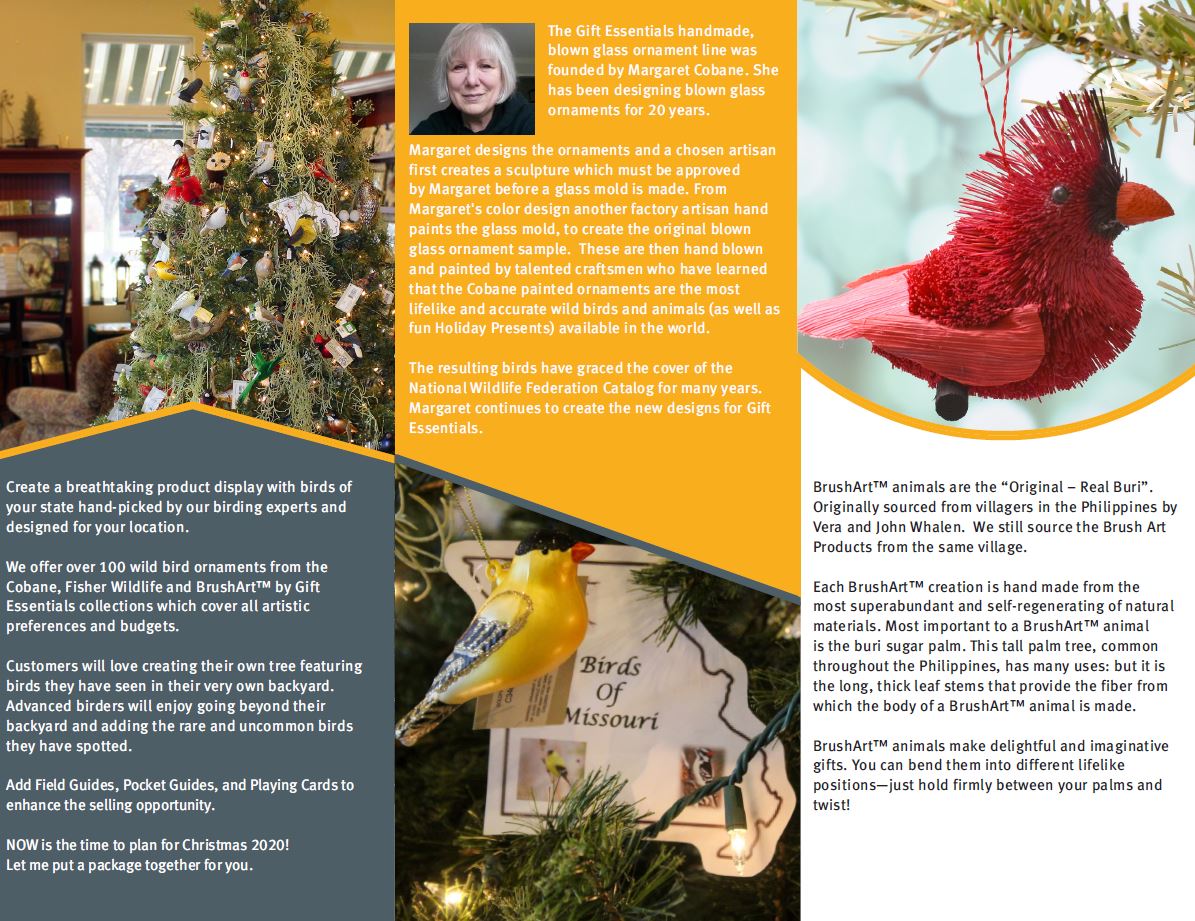
Birds of Your State PDF Version
Tips for Attracting Orioles
Click here for full brochure – Oriole TIPs
Because of their strikingly beautiful black and orange
or yellow plumage, their distinctive whistle, spring
songs, and their amazing suspended nest, Orioles are
quickly becoming one of America’s favorite birds. While
over eight species of Orioles can regularly be seen in the
United States, we’ll deal mainly in this flyer with three
species: Baltimore, Bullocks, and Orchard (range maps
on back page). All United States Orioles show variation
on the theme of black and orange or yellow plumage.
Except for in the Southeast, all Orioles are tropical
migrants. While migrations vary from year-to-year,
Orioles generally arrive in the South in early spring,
Midwest in early May, and further North soon afterward.
It is very important that you have Oriole feeders up and
ready, or often they will pass you by for better feeding
grounds. It is equally important to have nesting
materials out and ready to help encourage Orioles to
nest in your yard. Although studies are still being done
on how much we can tempt Orioles to nest in backyards,
by summer’s end, migrating Orioles are headed back
south to their tropical winter homes in Central and South
America. It does appear that Baltimore Oriole’s ranges
are expanding, while Bullocks and Orchard Orioles are
declining. All Orioles need and benefit from your help.
Click to View Hummingbird TIPs
In the United States, you can find over 16 kinds of Hummingbirds. For people east of the Rockies, the most prevalent by far is the Ruby-Throated Hummingbird. In fact, the Ruby-Throated Hummingbird is the most widely distributed of the world’s 338 species of Hummingbirds, all of which occur ONLY in the Western Hemisphere.
The Ruby-Throated Hummingbird is often found between woodland and meadow; however, it has adapted well to human development, but only if there is shelter, space, and food. It is frequently seen in suburban backyards with mature trees and shrubs, in wooded parks, and around farmsteads.
The Keys to Attracting Hummingbirds are to provide Food, Help for Nesting, and Misters (Water) for them to fly through. Providing natural plants that bloom from Spring through Fall is one of the best ways to attract hummers to your yard! Read on and learn how to make your yard a “Hummingbird Haven©.”
Summer activity around the feeding station is like watching an animated movie. Adults fly down with their young for lessons in getting food and water, flitting from one antic juvenile to the next in a rapid-fire exhibition of maneuvers. Now you can experience the frenzy with your own bird. Using the diagrams and instructions below, turn a simple piece of paper into a complex pattern of folds for flapping.
By: Mary Douglas
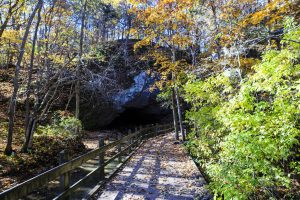
Fall is upon us with winter close behind. A stroll through local parks amid our autumn colors is always a delight this time of year. Take note of the abundant natural foods available for wildlife as you go.
Seed heads heavy with seed will be bent over, acorns will be scattered about the undergrowth, and berries will be heavy on the stems. Native plants and trees you may find include Sunflowers, Serviceberry, Red Cedar, Wild Plum, Black Cherry, Oaks, Basswood, Beautyberry, Dogwood, Hawthorn, Sumac, Virginia Creeper, Coneflower, Liatris, Asters, Black-Eyed Susan, Native Grasses, Winterberry, and others. Many of our native plants look like a weed, yet they are nature’s grocery store for our wildlife. You will likely find some of these natural foods in your yard. Along with the wild food, fall provides leaf litter on the ground that is winter nesting material for birds, squirrels, and bugs.
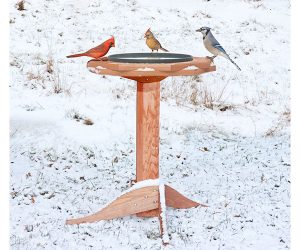
The Missouri Department of Conservation recommends leaving the native foods and litter where they are for the birds and critters. We can help our local wildlife by leaving and encouraging such native resources in our yards. Fall is the prime time to expand your native perennial plants either by division and replanting or by purchasing starts from local growers. Adding a reliable source of fresh water, such as a heated birdbath, and seed and suet feeders to supplement the wild harvest will attract and help support your local wild residents through fall and winter. Future benefits will show themselves in years to come.
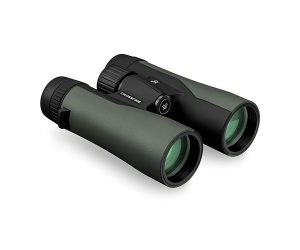
Fall also brings the shortened daylight hours that triggers the migration of birds. September is often the month we see the most activity at feeders from migratory birds. Birders have a great opportunity to take pictures in the fall as the birds offer unusual opportunities to see them as they move through on their way south. Cameras and binoculars are often in our pockets as we stroll about our parks. Songbird Station offers a wide variety of feeders, baths, and optics to meet your needs and budget. Utilitarian or decorative there is something for every bird lover and a variety of seeds and seed blends for every bird species. Take advantage of Nature’s bounty in the native plants, add a few strategically placed feeders, and use your binoculars to watch the show!
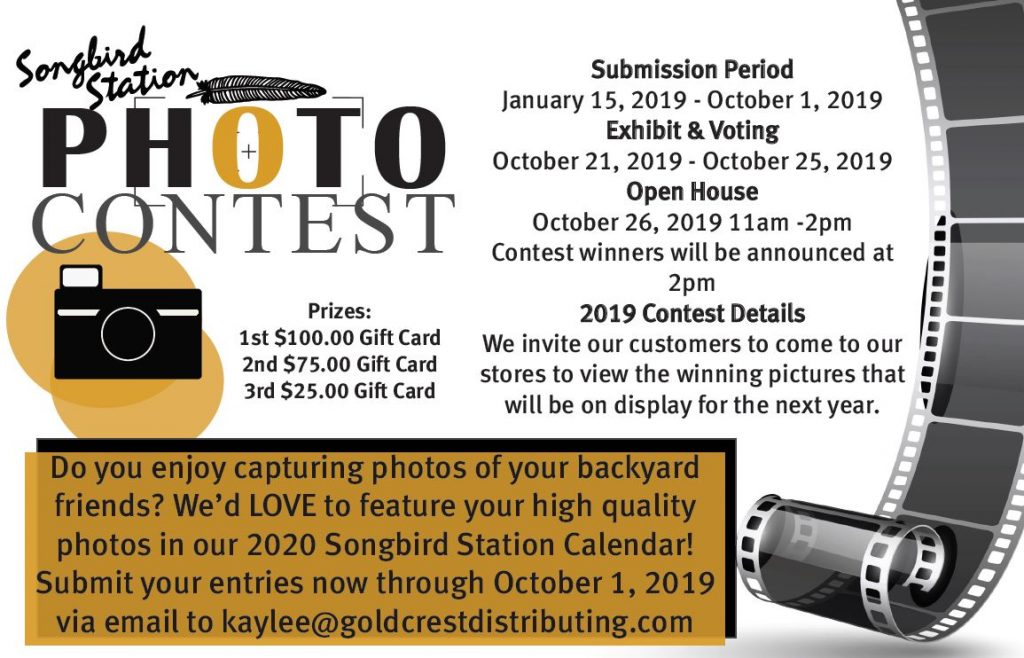
Full Contest Rules:
Submission Period
January 15, 2019 – October 1, 2019
Exhibit & Voting
October 21, 2019 – October 25, 2019
Open House
October 26, 2019 11am -2pm
Contest winners will be announced at 2pm
2019 Contest Details
We invite our customers to come to our stores to view the winning pictures that will be on display for the next year.
Email submissions to:
[email protected]
General Information
Subject: Wild Birds Only
Photographs from birds in captivity will not be accepted, this includes
events with wild birds.
Eligibility: General Public (Except SBS Staff)
Display Location: Songbird Station Columbia, MO
Submission Period: January 15, 2019 through October 1, 2019
Photo Information:
Photographer Name & Contact Information
Photo Title or Information (i.e. Robin in Feeder, etc.)
SBS will assign a reference number to each entry
Suggested Subjects and Categories:
Wild Birds in their Natural Habitat
Wild Birds at Feeders, Baths & Houses
Wild Bird Behavior
Group Shots (2 or more wild birds)
People Enjoying Wild Birds
Photo Composition:
Must also provide a digital copy to [email protected]
Resolution Size: 300 – (Photoshop is ok)
Number of Submissions:
Up to Three (3) per Photographer
Judging and Voting:
Photos will be judged during business hours October 21, 2019 through October 25, 2019 at close of business. All photos are judged by the public.
The Winners will be announced:
October 26th at 2:00 pm.
Prizes
First Place: $100.00 Gift Card
Second Place: $50.00 Gift Card
Third Place: $25.00 Gift Card
Disclaimer
Songbird Station (SBS) reserves the right to edit photo comments to make them more clear to viewers. Songbird Station is not responsible for damage, loss or degradation of submitted photos. Photos must have been taken by the submitting photographer. Each photographer is responsible for all questions connected with copyright issues. Submitted images become property of SBS and photographer agrees to permit use of submitted photos on the SBS web site, social media, and in future SBS advertising without charge.